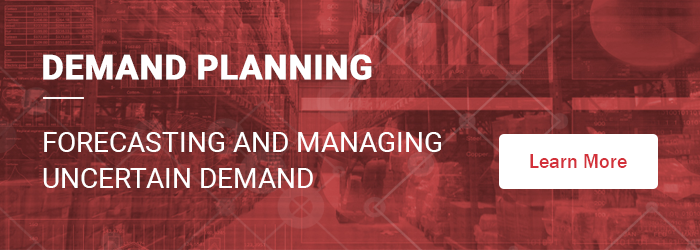Demand planning isn’t just about predicting what customers need—it’s about ensuring that businesses meet those needs with pinpoint accuracy, efficiency, and cost-effectiveness. The latest advancements in demand planning technology are tackling major challenges such as improving forecast accuracy, optimizing inventory management, and enhancing market responsiveness. In this blog, we’ll explore seven pivotal demand planning trends that are shaping the future: data-driven insights, probabilistic forecasting, collaborative planning, predictive analytics, scenario modeling, real-time visibility, and multi-level forecasting. These trends will help businesses stay ahead of the curve, streamline their supply chains, cut costs, and boost customer satisfaction, positioning themselves for long-term success. Data-Driven Insights Advanced analytics, machine learning, and artificial intelligence (AI) are now indispensable parts of demand planning. Tools like Smart UP&O empower businesses to dissect complex datasets, uncover hidden patterns, and make smarter, more precise predictions. This shift toward data-driven insights enables companies to respond swiftly to market shifts, preventing stockouts and cutting down on excess inventory. Probabilistic Forecasting Probabilistic forecasting zeroes in on predicting a spectrum of potential outcomes instead of a single number. This trend is especially significant for managing uncertainty and risk in demand planning. It allows businesses to prepare for various demand scenarios, improving inventory management and reducing the chances of either running out of stock or overstocking. Collaborative Planning Modern manufacturing is trending toward greater integration, with departments and stakeholders working more closely together. Collaborative forecasting involves sharing insights across the supply chain, from suppliers to distributors and internal teams. Breaking down silos and fostering collaboration ensures that everyone is aligned with the same goals, resulting in a more cohesive and efficient supply chain. Predictive and Prescriptive Analytics Predictive analytics uses historical data and trends to forecast future outcomes, helping businesses anticipate demand fluctuations. For example, Smart Demand Planner (SDP) automates forecasting to adjust inventory and production levels accordingly. Prescriptive analytics takes this a step further by offering actionable recommendations. Smart Inventory Planning and Optimization (IP&O), for instance, prescribes optimal inventory policies based on service levels, costs, and risks. Together, these tools enable proactive decision-making, allowing companies to not only predict but also optimize their responses to future challenges. Scenario Modeling Scenario modeling is becoming increasingly critical in demand planning, enabling businesses to simulate different situations and assess their impact on operations. This method helps organizations develop adaptable strategies to handle uncertainties effectively. Smart IP&O enhances this capability by offering What If Scenarios, which let users test various inventory policies before implementation. By tweaking variables like service levels or order quantities, businesses can visualize how changes will affect costs and service levels, empowering them to choose the best strategy for minimizing risks and controlling costs. Real-Time Visibility As supply chains grow more global and interconnected, having real-time visibility into inventory and supply chain activities is essential. Enhanced collaboration with suppliers and distributors, along with real-time data, allows businesses to make faster, more informed decisions. This leads to optimized inventory levels, reduced lead times, and improved overall supply chain resilience. Multi-Level Forecasting This approach involves forecasting at different levels within the product hierarchy, such as individual items, product families, or entire product lines. Multi-level forecasting is crucial for businesses with complex product portfolios, as it ensures accuracy at both the micro and macro levels.  Demand planning is a critical component of modern supply chain management, offering businesses the ability to enhance operational efficiency, lower costs, and better meet customer expectations. Leveraging advanced platforms like Smart IP&O significantly boosts forecasting accuracy and inventory management, enabling rapid responses to market changes. Automated statistical forecasting, combined with features like hierarchical forecasting and forecast overrides, ensures forecasts remain accurate and adaptable, leading to more realistic planning decisions. Additionally, tools like scenario modeling allow businesses to explore various demand scenarios across their product hierarchy, offering insights into potential outcomes and risks. This proactive approach enables businesses to anticipate the impact of policy changes, make smarter decisions, and ultimately optimize their inventory and supply chain management, keeping pace with the ever-evolving landscape of demand planning trends.    Semi Trailer,Garbage compression,Semitrailer,WagonCompression Hang up Trailers Kaili Special Automobile Co., Ltd , https://www.kailiwei.co.ke
